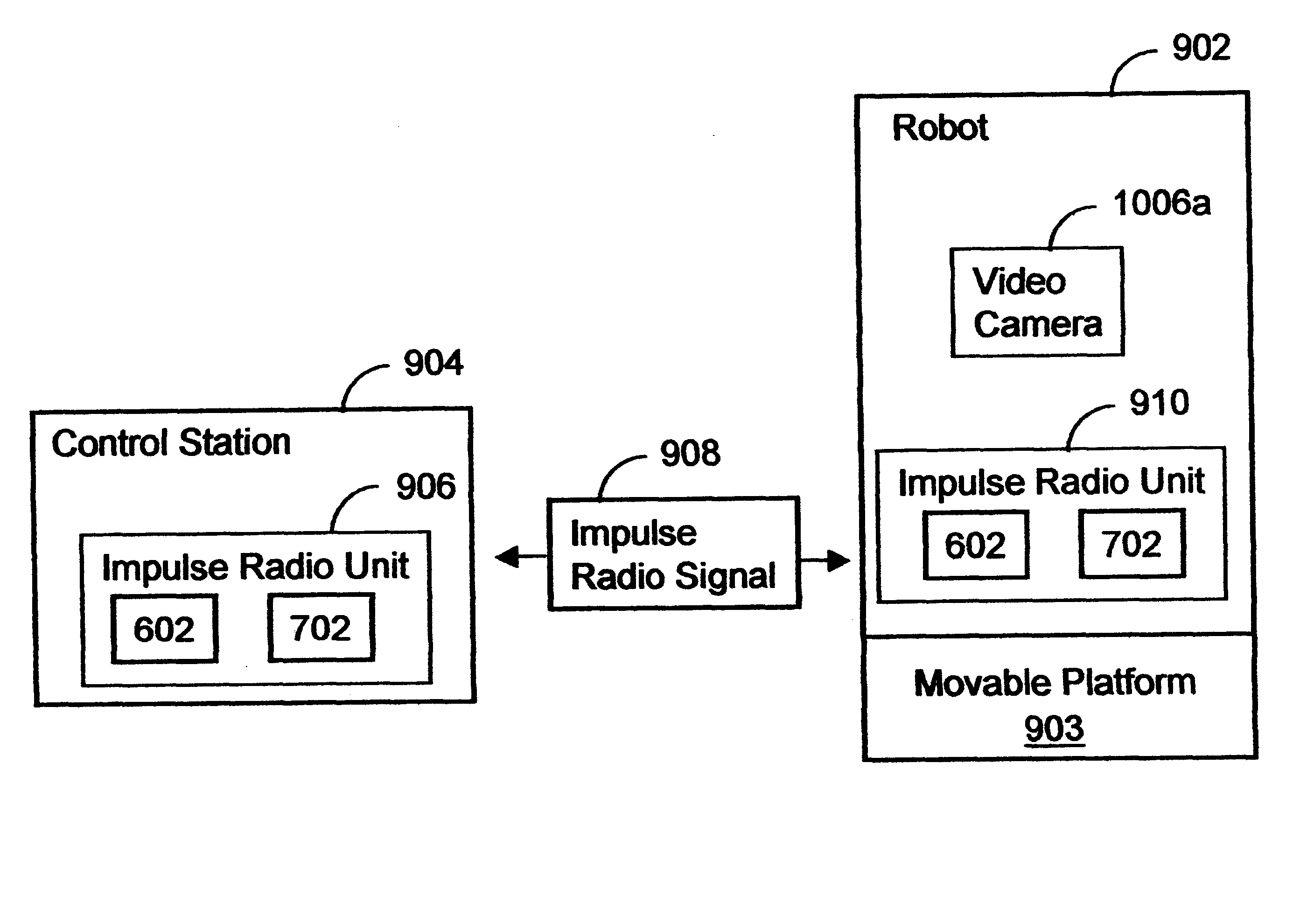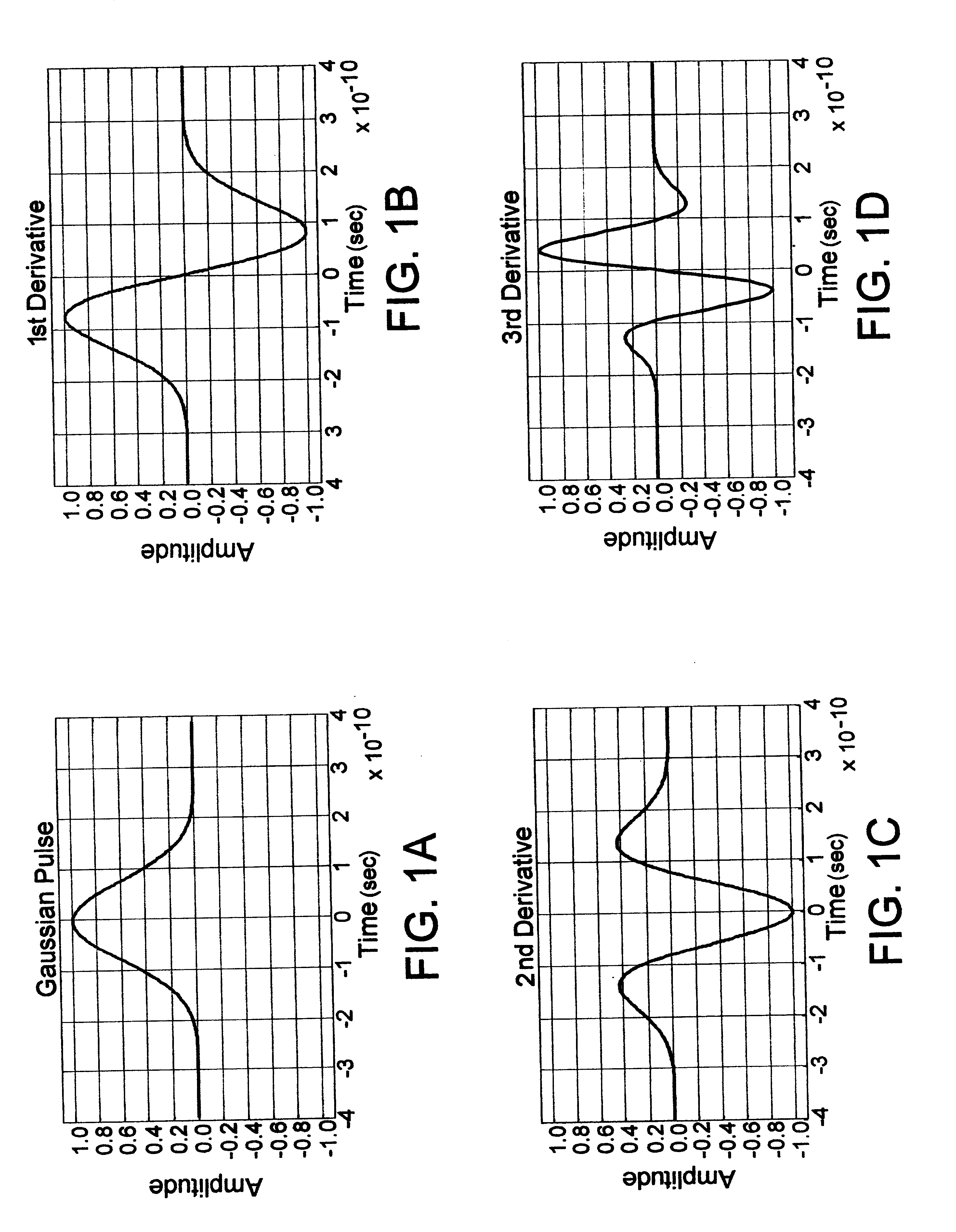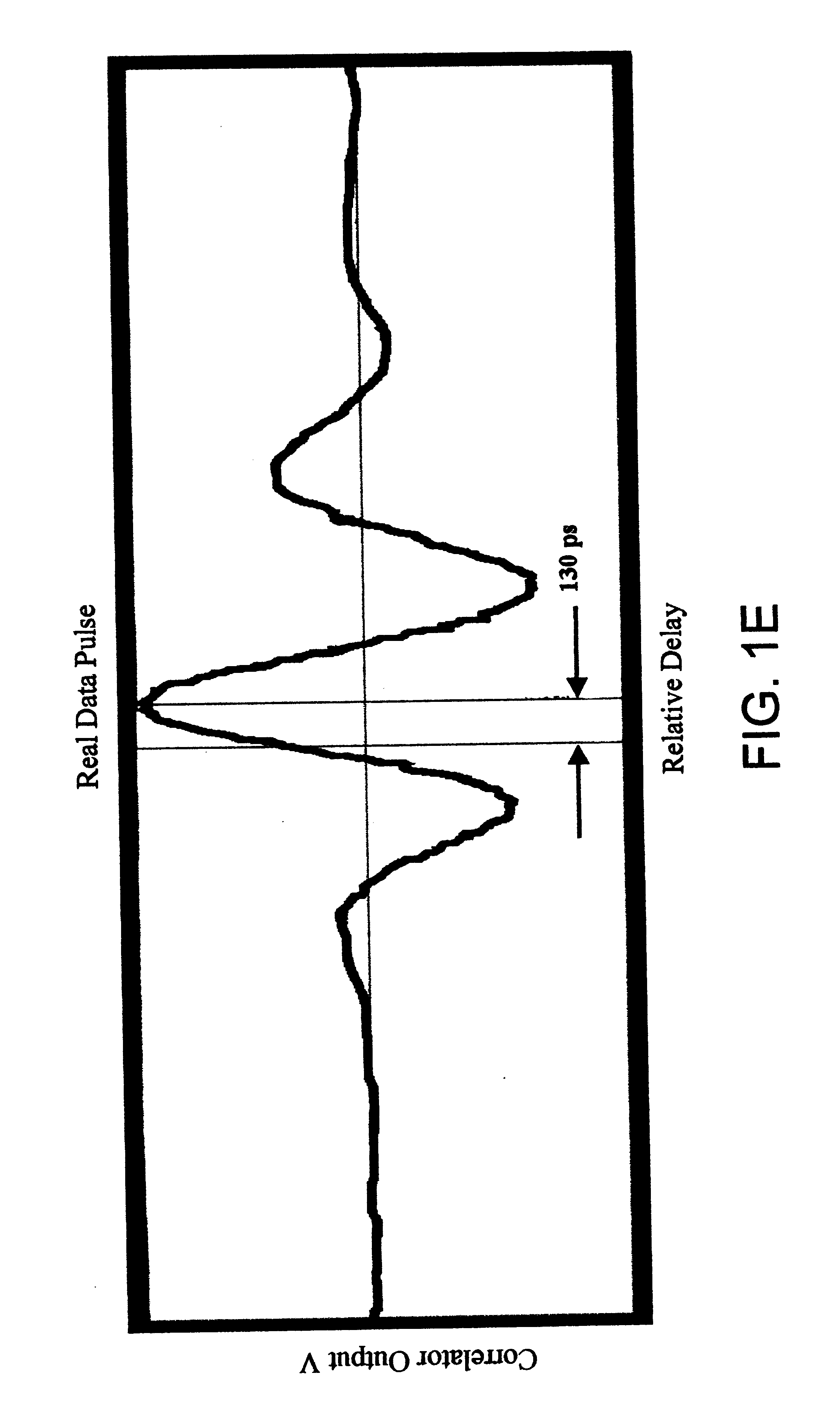Method and system for controlling a robot
a robot and radio transceiver technology, applied in the field of robots, can solve the problems of not being able to reach the standard radio transceiver attached to the moving robot, the radio signals sent from the standard radio transceiver cannot penetrate a certain wall or floor of the building, and it is difficult for the moving robot to maintain contact with the control station using a standard radio transceiver,
- Summary
- Abstract
- Description
- Claims
- Application Information
AI Technical Summary
Benefits of technology
Problems solved by technology
Method used
Image
Examples
Embodiment Construction
Referring to FIGS. 9-25, there are disclosed several embodiments of an exemplary system 900, an exemplary robot 902 and preferred method 1300 in accordance with the present invention. Although the present invention is described as using impulse radio technology, it should be understood that the present invention can be used with any type of ultra wideband technology, but is especially suited for use with time-modulated ultra wideband technology. Accordingly, the system 900, the robot 902 and the preferred method 1300 should not be construed in a limited manner.
Referring to FIG. 9, there is a diagram illustrating the basic components of the system 900 in accordance with the present invention. The system 900 includes a control station 904 that has a first impulse radio unit 906 which operates to transmit and receive impulse radio signals 908 to and from a second impulse radio unit 910 attached to the robot 902 (only one shown). The impulse radio signals 908 convey information using a ...
PUM
 Login to View More
Login to View More Abstract
Description
Claims
Application Information
 Login to View More
Login to View More - R&D
- Intellectual Property
- Life Sciences
- Materials
- Tech Scout
- Unparalleled Data Quality
- Higher Quality Content
- 60% Fewer Hallucinations
Browse by: Latest US Patents, China's latest patents, Technical Efficacy Thesaurus, Application Domain, Technology Topic, Popular Technical Reports.
© 2025 PatSnap. All rights reserved.Legal|Privacy policy|Modern Slavery Act Transparency Statement|Sitemap|About US| Contact US: help@patsnap.com



